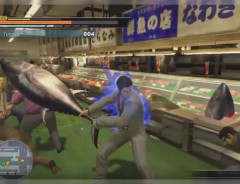- Tags:
- coronavirus / Festivals / Japan / Kyoto / Matsuri
Related Article
-

Turn your cat into a napping traditional Japanese dessert with the anmitsu pet bed
-

A Hilarious And Perhaps Drunk 4 Minute Summary Of The Yakuza Series, Just To Get You Caught Up
-

Celebrate Cat Day In Japan With Adorable Cat-Shaped Kitchen Tools
-

Enjoy A Meal With Domo-Kun At The DOMO Diner In Yokohama!
-

Nagasaki Minami Yamate Pudding Releases Fresh Strawberry Pudding
-

Japanese Cafe Customer Vows To Not Return After Staff Says: “First Time? Come Again!”, Gets Empathy Online



One of Kyōto’s three most important festivals, the Aoi Matsuri, went ahead at Shimogamo shrine on friday, albeit incredibly scaled back and without the famous procession that normally makes its way through the now empty streets of the former capital.
The annual event normally sees around 600 people make their way through the streets of Kyōto as part of an ancient procession, and then moves onto entertainment such as horse races and horseback archery.
According to Kyodo News, during 2019, the event saw around 47,000 people spectating. This year however, the decision was made in early March to cancel both the parade and the choosing of a Saiō-dai (dedicated imperial princess), due to the threat of the coronavirus. Even though the main entertaining events were cancelled this year, Shinto Priests still went to Shimogamo shrine on the 15th of May in order to pray for an end to the pandemic and a fast recovery.
Source: Flickr/Creative Commons
Aoi Matsuri has a rich history of around 1,500 years and is believed to have its roots embedded since the reign of Emperor Kinmei. At the time a number of natural disasters were thought to have been caused by divine punishment from the Kamo deities, and so to satisfy the gods, the emperor sent members of the court to the shrine to pray for relief from the calamities and a bountiful harvest.
The acts performed by the emperor's retainers became an annual event, with many people travelling from across the country to spectate. During the reign of Emperor Kanmu, the deities of the Kamo shrines were recognised as protectors of Heian (present day Kyōto) and the annual festival was raised to a high level of importance.
The festival went through a long period of uncertainty, with a number of hiatuses happening from the beginning of the Kamakura period to the end of the second world war. However by 1953 the festival and it’s procession was revived once again and has been held annually ever since.
The festival is split into two main parts; a procession and the shrine rituals. The procession is what draws most spectators to the event. Starting at 10:30am on the 15th of May, around 600 people dressed in traditional heian noble costumes make their way from the Kyōto Imperial Palace across an 8 kilometer route through Kyōto to the Shimogamo shrine and then onto the Kamigamo shrine.
The procession is led by the Imperial Messenger and the Saiō-dai and is followed by two oxcarts, four cows, thirty-six horses, and six hundred people.
After reaching the two shrines, two important figures in the parade; the Imperial Messenger and the Saiō-dai perform rituals to appease the gods. Traditionally the Saiō-dai was a woman related to the emperor who was chosen to represent the emperor and dedicate herself to the shrine. Nowadays an unmarried woman from Kyōto is chosen to play the part of the Saiō-dai during the procession. Before the festival begins the Saiō-dai has to go through several different purification rituals, such as the ancient practice of Misogi.
Source: Flickr/Creative Commons
A number of events and locations have been affected by the ongoing outbreak of the novel coronavirus, with the biggest event being the Tokyo 2020 Olympics. But with people refraining from attending events in large numbers and with many places offering alternative ways to stay entertained, such as how Tokyo Rainbow Pride 2020 went online this year, we can hope that everything will return to normal asap and that events which were cancelled this year will go ahead in 2021, the Aoi Matsuri being one of them.